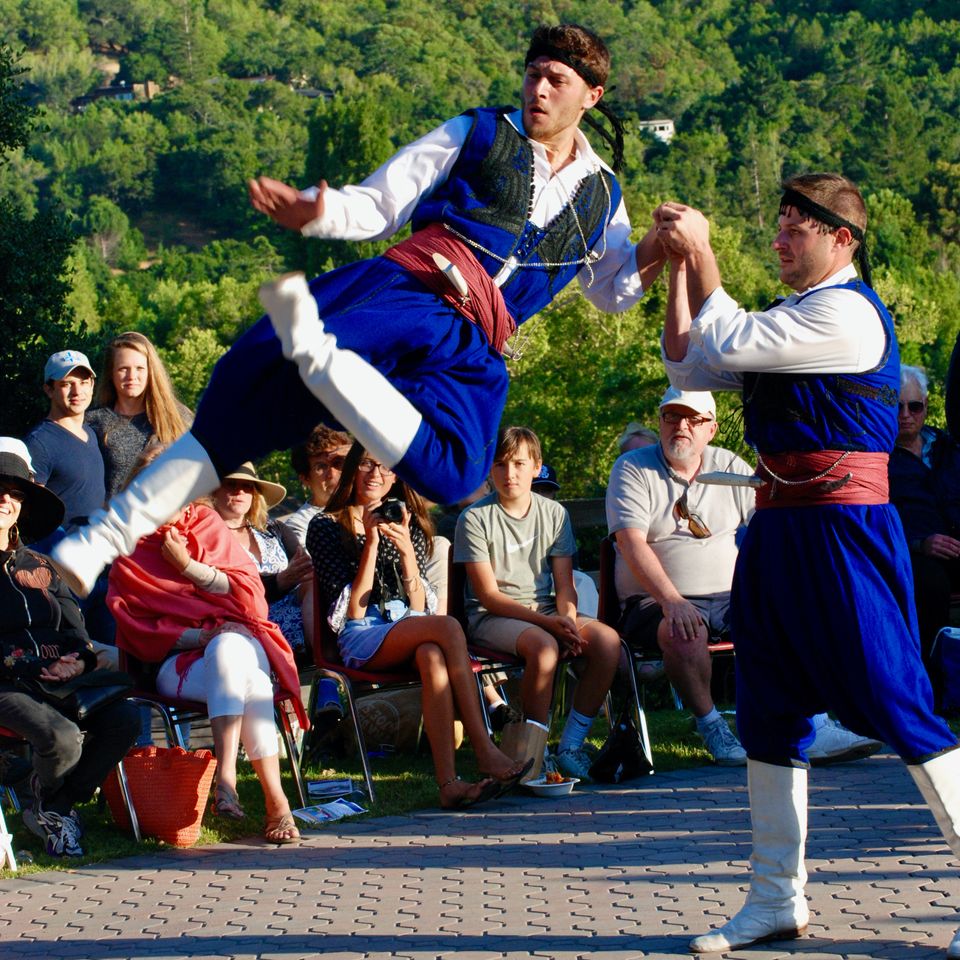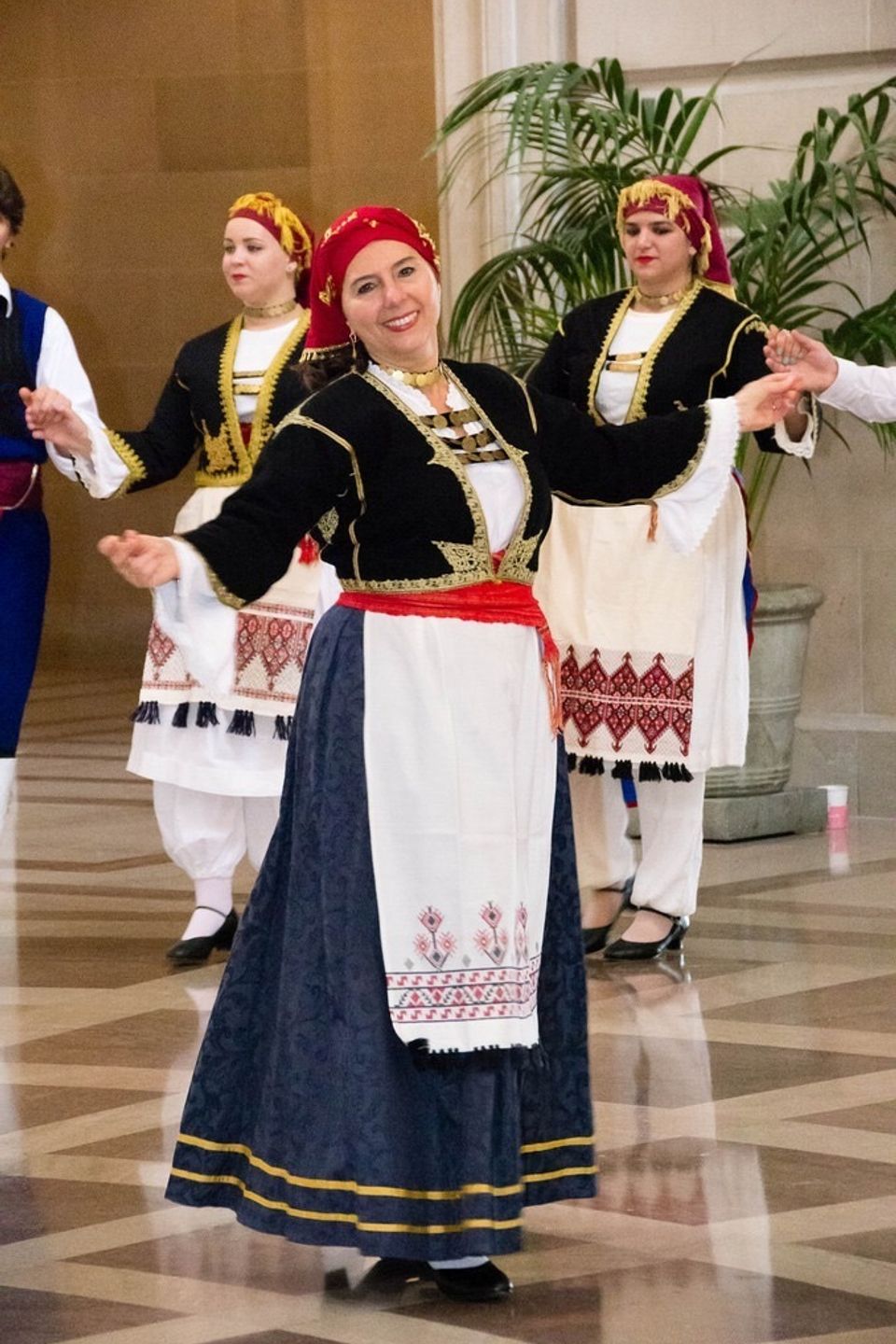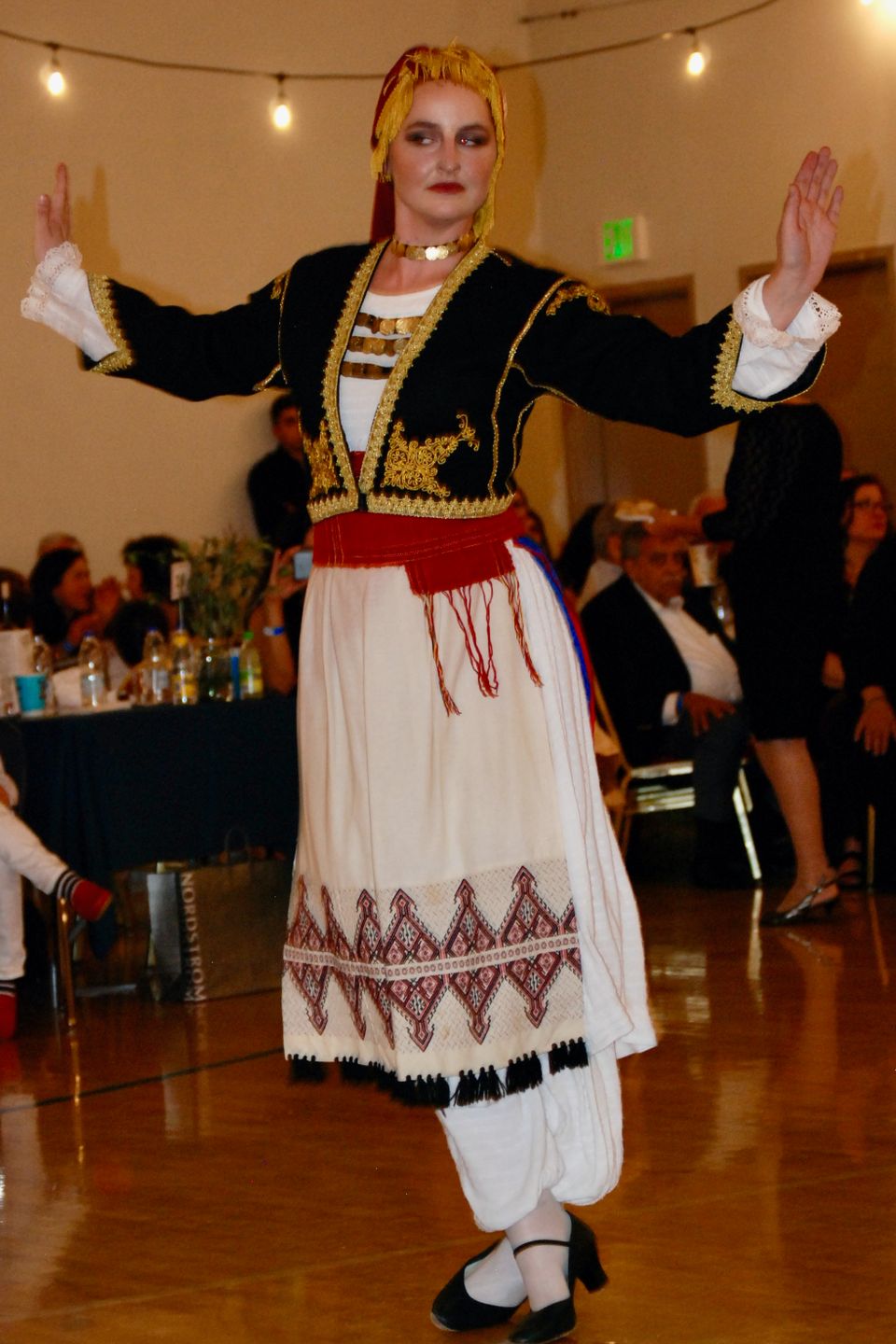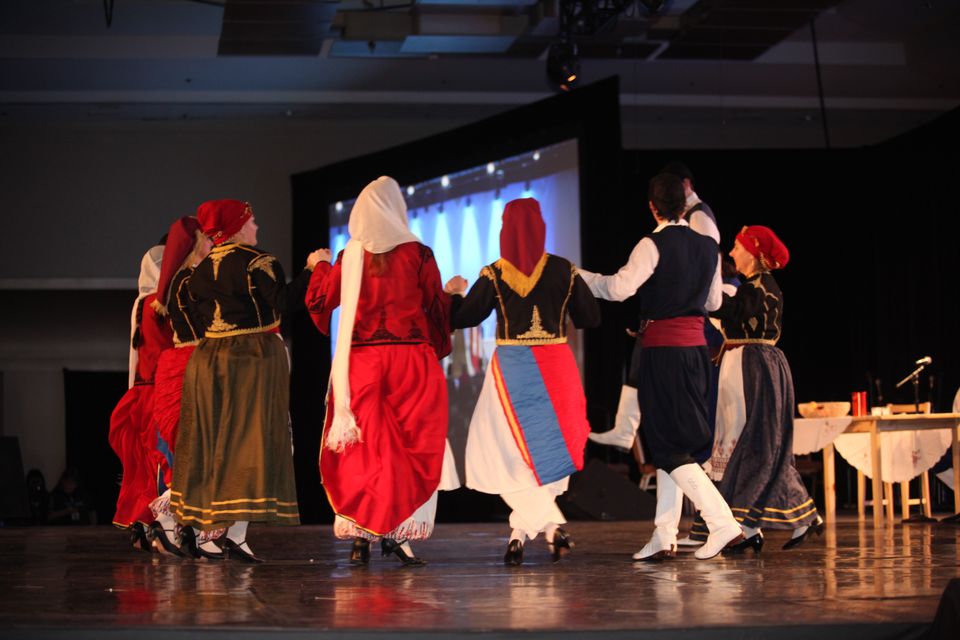
Men's Cretan Costume
The traditional men’s costume of Crete dates back to the beginning of the 16th century. It consists of the vraka or breeches (βράκα), vest (γελέκι) and jacket worn over the vest called mitani (μεϊτάνι). The fabric is heavy wool felt to protect from the cold and the vest and jacket are embroidered with deep blue or black silk twisted cords. A white cotton or silk shirt is worn, and sometimes striped or plaid shirts. Black shirts are worn more recently but not for festive events like weddings, engagements, baptisms, etc.
The traditional head piece was the red fesaki (φεσάκι) which was folded over and had a black tassel. This was worn until about the early 20th century. After that the large headscarf called sariki was worn, wrapped around the head with the ends hanging on the shoulders at the front and back. More recently the sariki is made by crocheting black silk thread, with fringes around the edges, symbolizing the many years of Turkish occupation in Crete and the grief and mourning for the people lost in the explosion of the monastery at Arkadi in 1866.
The silver knife that is tied into the belt was introduced in the late 18th century. The handle of the knife is made in the shape of a fish tail and the sheath (called φουκάρι or foukari) is also made of silver and carved with traditional designs.
Source: Τσουχλαράκη, Ι. Η ΙΣΤΟΡΙΑ ΚΑΙ Η ΛΑΟΓΡΑΦΙΑ ΤΗΣ ΚΡΗΤΙΚΗΣ ΦΟΡΕΣΙΑΣ, Αθήνα 1997,1999 (Β’ έκδοση).
The traditional head piece was the red fesaki (φεσάκι) which was folded over and had a black tassel. This was worn until about the early 20th century. After that the large headscarf called sariki was worn, wrapped around the head with the ends hanging on the shoulders at the front and back. More recently the sariki is made by crocheting black silk thread, with fringes around the edges, symbolizing the many years of Turkish occupation in Crete and the grief and mourning for the people lost in the explosion of the monastery at Arkadi in 1866.
The silver knife that is tied into the belt was introduced in the late 18th century. The handle of the knife is made in the shape of a fish tail and the sheath (called φουκάρι or foukari) is also made of silver and carved with traditional designs.
Source: Τσουχλαράκη, Ι. Η ΙΣΤΟΡΙΑ ΚΑΙ Η ΛΑΟΓΡΑΦΙΑ ΤΗΣ ΚΡΗΤΙΚΗΣ ΦΟΡΕΣΙΑΣ, Αθήνα 1997,1999 (Β’ έκδοση).




